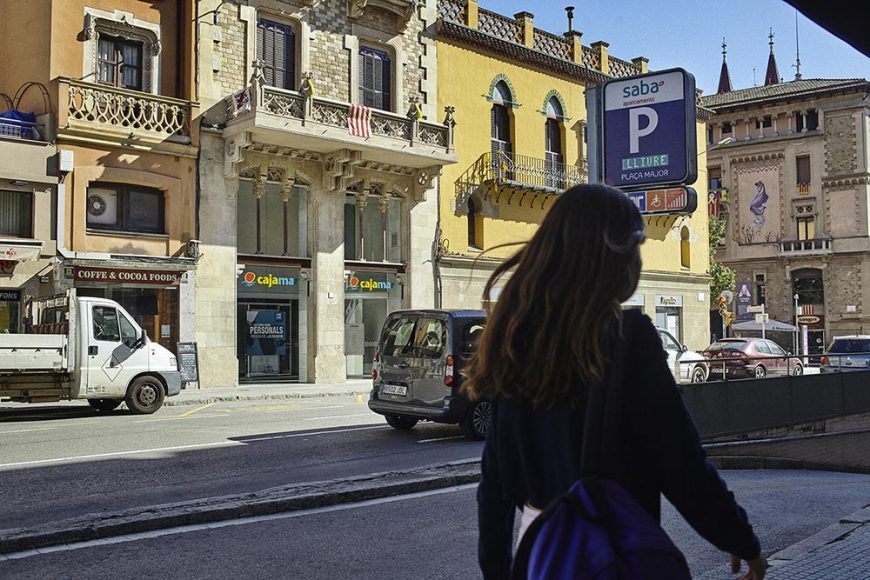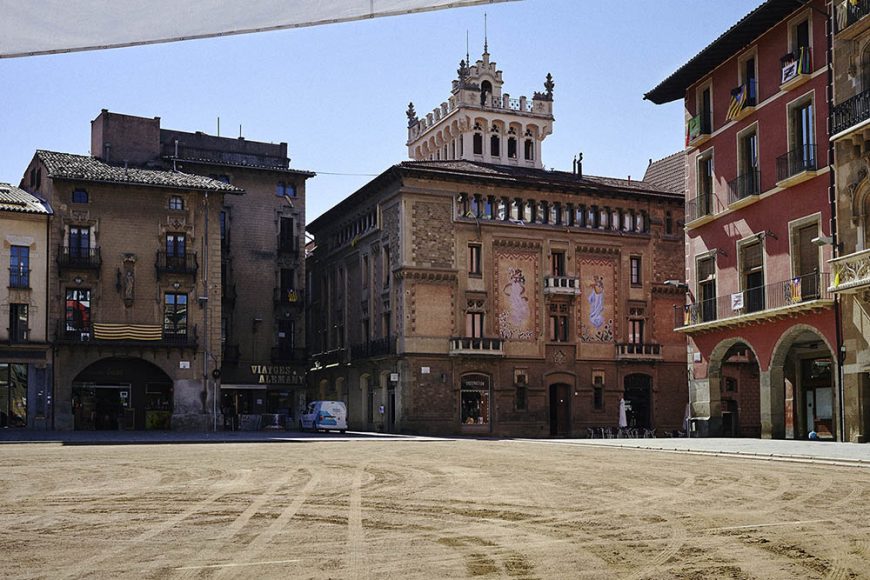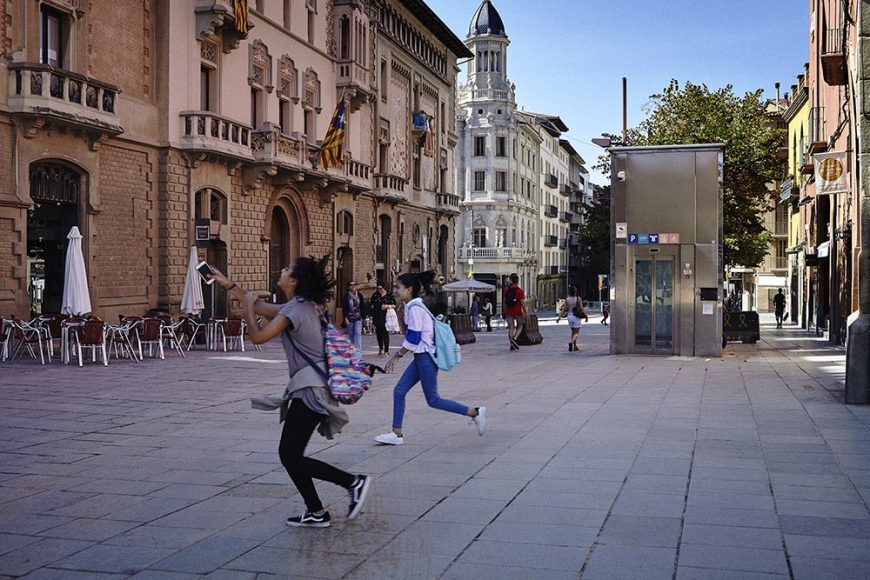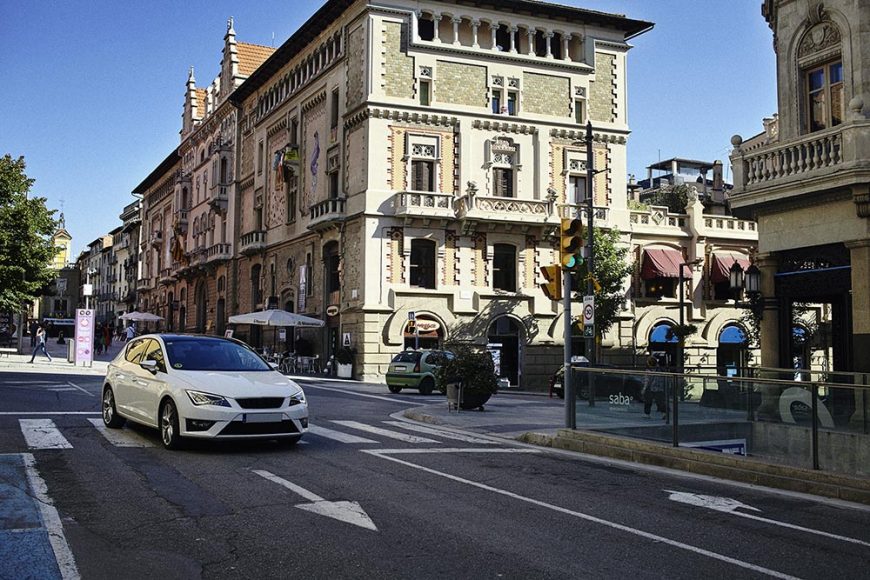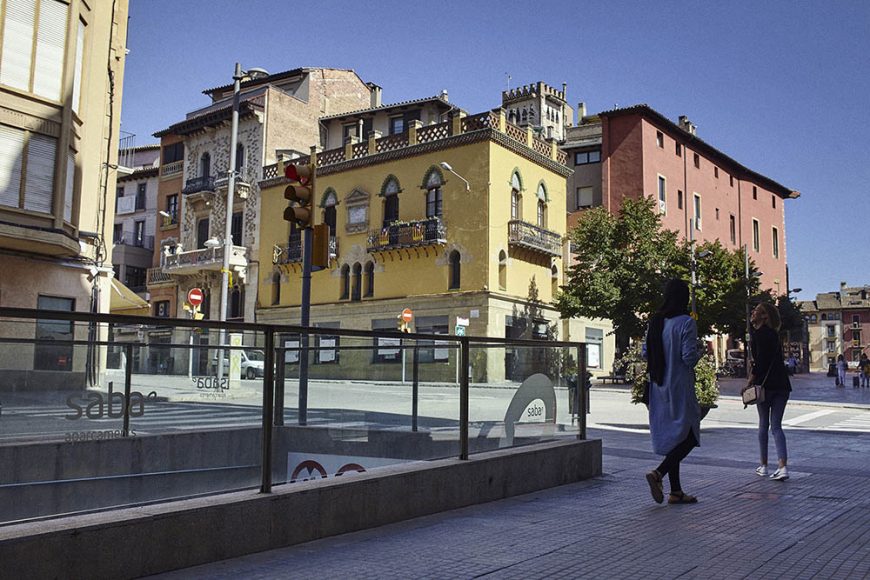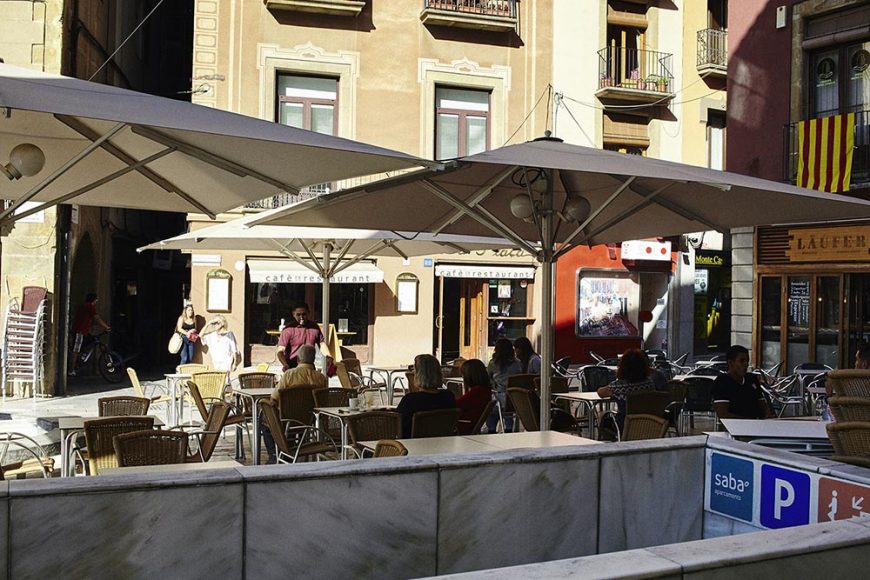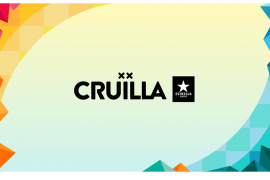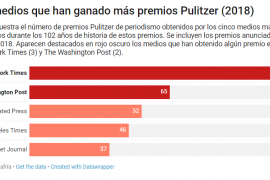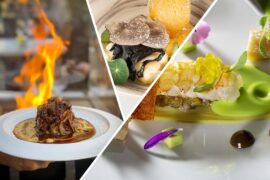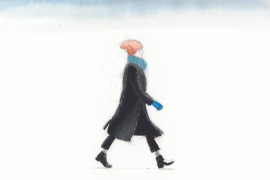[dropcap letter=”T”]
he walk into the Plaça Major—the main square in Vic—along Jacint Verdaguer street goes arm in arm with sweetness and the beauty of several mansions. The advertisements for pastry-shops and sweetshops, sponge cakes, cupcakes and coca de Perafita pastries encompass the Mercadal—the market-place—by which name the unquestionable kernel of Vic, the capital of Osona county, is also known. If there is anywhere in the country that is a stronghold, this is undisputably it. Jacint Verdaguer is the street that goes straight from the train station to the Plaça Major, thus complying with a geographical rationale which those arriving by train are grateful for. I enjoy breakfast in one of the cafés located by the corner of Verdaguer Street and the Plaça Major, next to the Casino de Vic—not a casino, but a recreational and cultural association typical of Catalan towns and villages—one of the many emblematic buildings in this expansive, distended quadrangle, inviting you to regard all its details. Once I wipe my chops (the croissants and the cupcake that accompanied the coffee are finger-licking good), I set about the exploration of the Plaça Major.
There is the hustle and bustle of vans unloading products for the premises beneath the porches. The sun seems to want to make some of the more prominent mansions shine, their terraces with privileged views, their ornaments, and the numerous banners demanding freedom for the political prisoners, and the estelades—the single-starred Catalan independence flags. I entertain myself with the tiles beneath one balcony, the ornaments on the facades, the window decorations, the porch arches—all changing, depending on the building under which they shelter; the arches give this impression of being the sum of different periods, aesthetic efforts and tastes…
In the nooks behind the wooden beams, you might catch sight of swallows’ nests. Who knows how many years they have found shelter there! Who knows how many couples have met in the square, who have danced or kissed there.
I immediately feel the good cool freshness below the porches. And I also regard the colours of the buildings, carefully restored, oranges, ochres, browns, reds, whites, as if somebody had whimsically found variations on their palette. Casa Costa, Casa Tolosa, Casa Moixó, Casa Beuló, Casa Cortina, are the names of the most distinguished houses in the square. Said like that, it’s as if it’s the line up of a basketball team being reeled off with a special sonority, resonating in time. Altogether, they sum styles and centuries, Gothic, Baroque, Renaissance and Modernista—the Catalan equivalent of Art Nouveau or Jugendstil.
In the nooks behind the wooden beams, you might catch sight of swallows’ nests. Who knows how many years they have found shelter there! Who knows how many couples have met in the square, who have danced or kissed there. The market place every Tuesday and Saturday, a place for major events—the Medieval Market, the Vic Live Music Market, the Vicantic antique fair… The Town Hall is set in a building in the royal part of Vic, built around 1358. A narrow building, it looks like a tiny house, and if not for the balcony one might say it displays a touch of abashment, of not wanting to stand out too much. But from afar you can see its clock tower, which commands the square.
From the street that runs by the side of the Town Hall, you get the impression for a moment that a capgròs—a figure with a large head worn at town fetes—should appear, or a dancer or a child from the film Ventre Blanc, the delicious fable that Jordi Lara dedicated to the old city of Vic and its popular culture. A love song to both. A tribute that invites you to contemplate the city and its expressions with a new gaze, enchanted by its beauty and by what very often goes unnoticed.
Perhaps because I have invoked the universe of author Jordi Lara and the dreamlike atmosphere of Ventre blanc, as I go towards the northern side of the square my attention is drawn to the figure of a man: an elderly man in a long tunic, cloth sandals and a stick, walking about aimlessly. Where had he come from? A couple walk by him, in sportswear, loud colours, with that tanned skin that makes you bristle… And the man keeps poking his cane into the grit surface of the square. Then he runs into a young girl, with her head covered, and they start a lively conversation, but I can’t understand what they’re saying.
I carry on down and see that a tanker comes into the square and begins to draw circles soaking the grit with water. The circles become smaller, the part of the square darkened by the water ever greater, and its movement has something of a harmonic dance to it. A small child watches the tanker’s dance. A couple of elderly ladies wait to cross because they do not want to be soaked. And in this daily repetition and the kind of surprise that mirrors it, seems to me to be a source of joy, the joy of things occurring successively, in chain, functioning.
I have by now reached the northern side of the square, much more crowded with shops than the south, which has a slightly more worn down air to it. They say it has always been this way, no one knows why. They also say that when they went for a stroll, years ago, as youths, the side where the porches are was where one would walk, to see and be seen. It was precisely on this L-shaped corner on the northern side where most of the cafes were aligned. On that side, in the shade, a capgrós lying with his legs crossed, looks on in pleasure. It is the sculpture of Merma or the Cap de Llúpia, a grotesque capgrós that opens the procession before the gegants—giant figures also traditionally paraded during Catalan town fetes—and plays cat and mouse with the children. You might say the bronze Merma is laughing. You might take him by the arm, invite him to dance in the square and climb together up to one of the terraces with a view.

